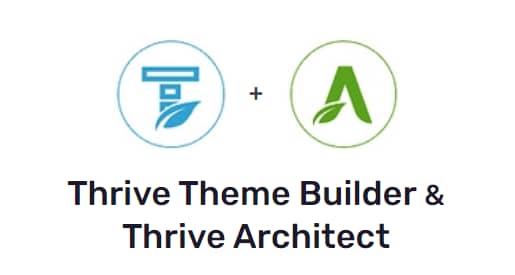Are you trying to figure out how to get clients fast?
Getting clients can often feel like a game of luck, leaving you unsure where to put your time and effort to secure your next gig.
But it doesn’t have to be like that.
Why?
Because we went ahead and drafted this guide to help you learn how to get clients quickly and consistently.
Whether you…
Are a solopreneur or startup wondering how to find new clients
Are a consultant or blogger who’s tired of using job boards like UpWork to find prospects
Are struggling with working in the business vs. spending time finding clients
Or are looking for a reliable stream of clients now that your business is running well...
...this article is going to be useful for you.
Read this in-depth step-by-step guide to learn how to attract prospective clients and retain them — the right way.
Every New Entrepreneur’s Question: How Do You Find Clients Consistently?
Finding quality clients consistently is a challenge that many entrepreneurs and business owners face.
It's not just about getting your name out there; it's about connecting with the right people who need what you offer. To new business owners, this can be extremely daunting.
You’re new to business, filled with passion, and just want to see this venture succeed.
You see, the key is finding your first client (and more after that) is to develop a strategic mindset.

Start by deeply understanding your target market. What are their pain points? What solutions are they seeking?
How can you form connections with potential customers you can genuinely help? Once you have this insight, tailor your online presence to speak directly to them.
You also need to work on being proactive and reaching out to your target audience through email marketing, content creation, and other digital marketing strategies.
For new small business owners and those with minimal marketing experience, this guide will help you create a streamlined client acquisition process you can use over and over again.
How to Get More Clients For Your Online Business (12 Tips)
1. Create a Personal Branding Website
A personal branding website is a key tool for attracting and retaining new clients. You need a digital space of your own that tells people who you are, what you do, and why you’re the best person for the job.
Relying on third-party platforms like Facebook, LinkedIn, etc. is risky because you could lose your account at any time.
But when you have your own website for your business, you have total control over how your site looks and acts.
A personal branding website is the best way to showcase your value proposition, set yourself apart from the competition in your field, and build yourself as an industry authority.
You don’t need to be an expert graphic designer or copywriter to create an amazing website design that features compelling copy.
You just need the right tools.
Thrive Theme Builder and Thrive Architect are the duo you need to create an impressive WordPress web design for your business.
These powerful no-code tools are designed to help you create a visually appealing website that makes your own business stand out.
Thrive Theme Builder takes the stress out of creating a custom WordPress theme, helping you set up all important parts of your website in minutes.
In a few clicks, you’ll have chosen and set up your ideal theme, unique color scheme, and core site templates (homepage, headers, footers, etc.)
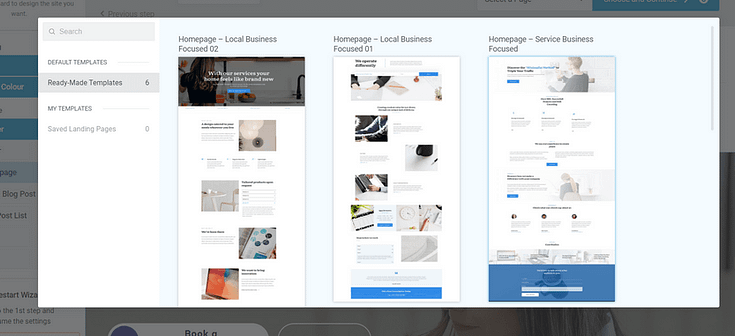
Example of page templates from Thrive Theme Builder
And once this is done, you’ll hop into Thrive Architect, our powerful landing page builder, to turn your page templates into your webpages.
Totally unique to your brand.
Build your pages like a design pro using our drag-and-drop editor and our set of customizable page & block templates.

Thrive Architect Editor
Whether you’re a non-techie business owner who wants easy tools to create a professional website, or an advanced web developer who wants to build a high-quality site faster, these tools work for you.
All templates are SEO-friendly and mobile-responsive, right out of the box. But Thrive Architect also features built-in mobile-optimization features to accommodate any changes you make.
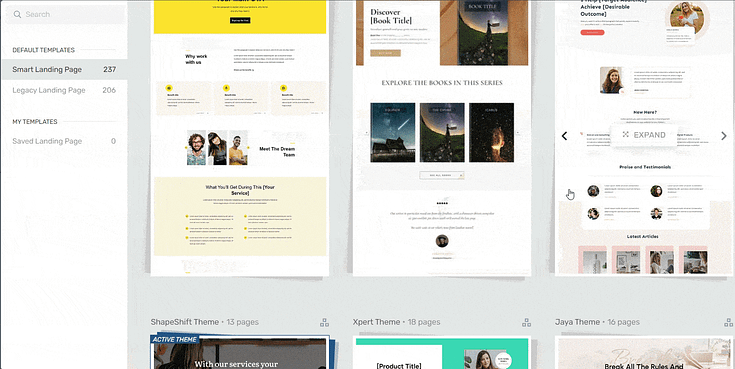
Landing page template sets in Thrive Architect
No need to code. No need to purchase expensive add-ons. You get everything you need to put your business online in a solid way.
You can purchase Thrive Theme Builder and Thrive Architect as a bundle or as part of Thrive Suite, where you get access to eight additional premium plugins.
2. Find Your Client Resource Network (CRN)
As humans, we are hardwired to seek out those like us — both in business and in our personal lives. If we are interested in a topic, or work in a particular industry, we seek out communities where we can share advice, ask questions, present new strategies and simply be around people doing similar things.

This is great for you, because someone has already done all the hard work of collecting your ideal customers in one place.
Now all you need to do is find and tap into these networks.
These networks can take the form of:
Paid Online Forums
Facebook Groups
Subreddits
LinkedIn Groups
Masterminds
In-person Industry Guilds, Associations, and Networks
Local Industry Groups
Communities around online courses (e.g. WP Elevation, FunnelHackers)

WP Elevation's homepage — an example of a community built around an online course.
To get started, go on any of the platforms mentioned above, search: [your ideal client’s job title or industry] + ‘community’, ‘network’, ‘mastermind’ or ‘group’. Also do a search on Google to find any outlier groups like those associated with paid courses.
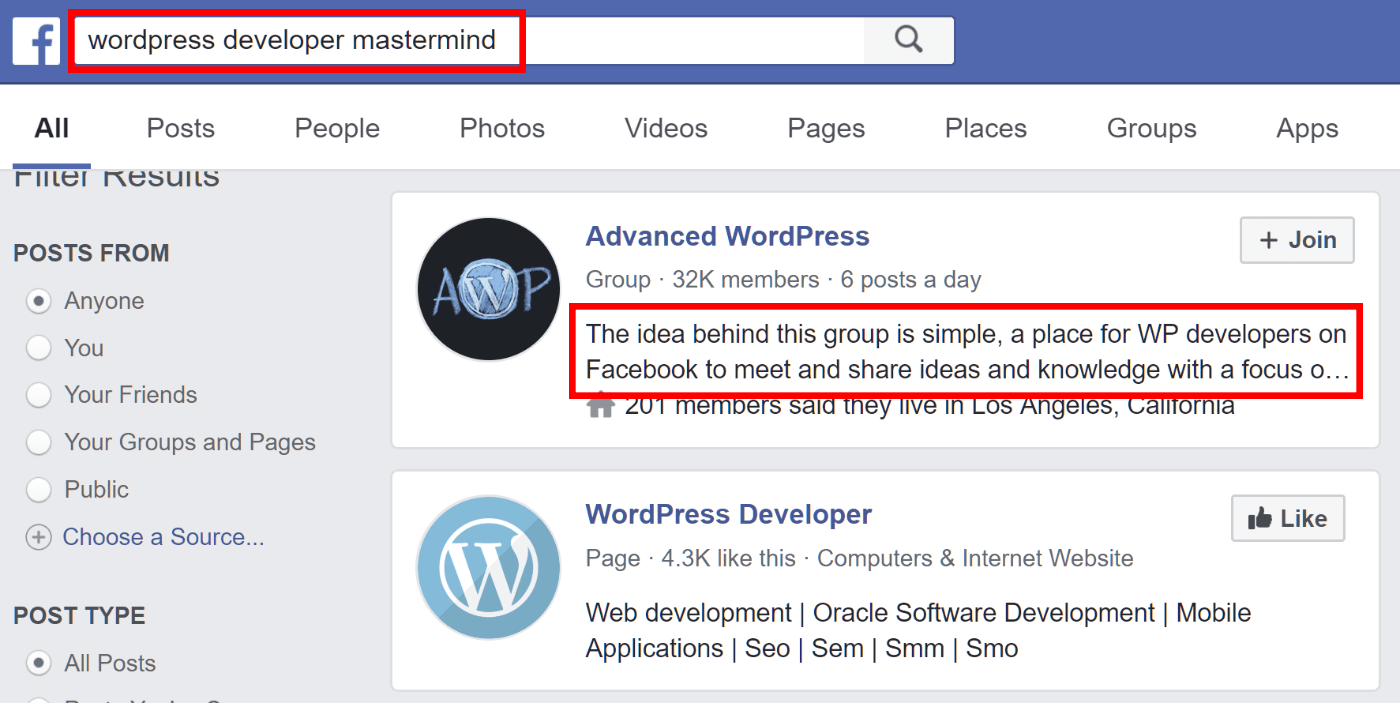
The results of a Facebook Group search for the terms [WordPress developer] + 'mastermind'.
Join three of the most value-based, community-oriented networks you can find. A mix of free and paid CRNs should give you access to a good span of the market.
3. Create Your Main Offer + Offer Page
You have your personal branding website and a CRN, now.
But before you start telling people to “check out your business”, you need something to woo them.
That’s where your offer page comes in. It’s a way of saying to your potential client ‘if you’re curious about my services, here’s a risk-free way of seeing if we’re a fit.’
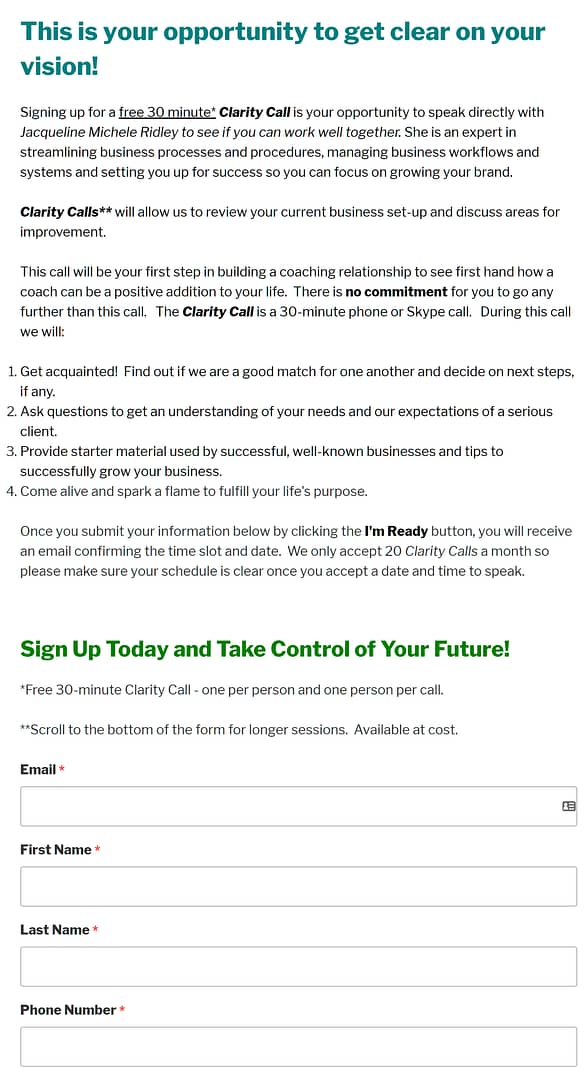
Create an offer like this one from Mahogany Hustle to attract clients.
Your offer page is a landing page where your lead can sign up for a free or low-cost offering — a taster if you will — to your services. Your offer should be a no-brainer for an interested lead.
Give a ridiculous amount of value here, something that will give your clients a quick win and leave them feeling great about potentially working with you.
A few examples could be:
A free coaching call
A free audit of their site, business, accounts, etc.
PDF, eBook, or quiz
No matter which of the methods below you use, your end goal will almost always be to get potential clients to this page and into your email list.
Building this page should be quick.
If you’re using Thrive Architect, choose one of the landing page templates and customize it for your offer.

More templates in Thrive Architect
Every landing page template includes all the key components (hero sections, call to actions, etc.) you need to create an enticing offer page.
Once you’ve created your landing page, use Thrive Architect and your email provider to build a simple lead-generation funnel to capture converted visitors and create more gigs for your business.
4. Optimize Your Website for Search
Your goal should be for potential clients to find you when they use search engines to look for your services or industry.
The easiest way to optimize your website for search engines is to use a reliable SEO plugin.
Most business owners don’t have time to learn the intricacies of search engine optimization, and that’s why tools like this exist.
Our top recommendation for WordPress websites: All in One SEO
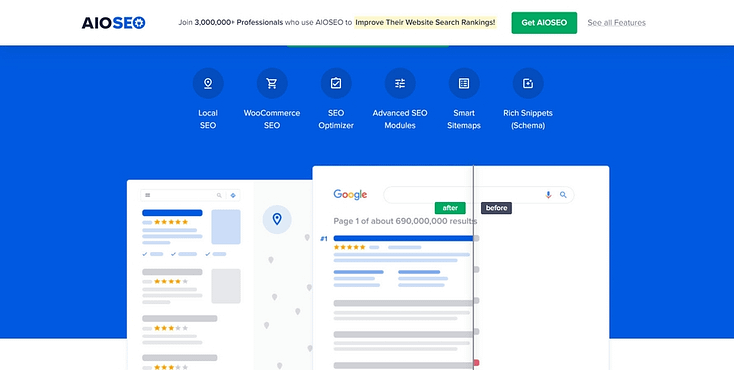
AIOSEO handles all the technical aspects of optimizing your website and provides key tips on how to make your content SEO-friendly.
This plugin is easy to install, even easier to use, and will help you get your target audience in front of the right eyes, so you can convert them into leads and customers.
No matter which of the methods below you use, your end goal will almost always be to get potential clients to this page.
5. Collaborate with Like-Minded Businesses and Creators
Team up with business owners and creators in niches that complement yours.
This is a great way to reach different demographics while building your reputation as an expert in your field.

For example, if you’re a fitness consultant, think of reaching out to nutritionists, wellness practitioners, or even doctors. You can cross-promote each other’s businesses and content, without being in direct competition with each other.
Collaborating can look like guest blog post exchanges, featuring as guests on each other’s podcasts, co-posting on social media platforms, or co-hosting live meetups.
It’s a win-win situation for everyone involved.
6. Build Your Personal Brand on Social Media
Social media is a great way to expand your online presence.
While your personal website serves as the main hub for your brand, social media is your digital business card.
Use this tool to spread the word about your business, connect with more of your target audience, and drive traffic to your offer pages.

Start with one or two platforms – the ones you choose will depend on your audience.
For example, a LinkedIn profile is a must for business and marketing consultants.
If you’re building on a budget, don’t dive into influencer marketing or paid advertising (e.g. Facebook ads or Google ads) yet. Spend time building an audience organically and forming your brand’s voice, first.
7. Run Regular Webinars and/or Workshops
Running regular webinars and workshops is an incredibly effective way to attract new clients and expand your current client base.
These interactive sessions serve as a platform to demonstrate your expertise, share valuable insights, and directly engage with potential clients.

As you plan these sessions, focus on delivering content that solves problems or answers key questions your potential clients might have. It's not just about presenting information; it's about creating an experience that leaves participants feeling informed and empowered.
After each session, follow up with your attendees. You can do this by sending thank you emails, providing additional resources, or offering exclusive discounts on your services or products.
This simple strategy keeps the conversation going and can lead to conversions. To leverage these events further, record them and use the content as part of your content marketing strategy.
Turn your transcripts into blog content, social media posts, and podcast episodes.
8. Leverage Cold Email Outreach
Cold email outreach is a 50/50 kind of strategy – it can help you get more clients or repel potential prospects completely.
It all boils down to how you use it.

If you spam 1000 inboxes with a copy/pasted generic sales pitch, it’s not going to do you (or the internet in general) any good.
For your emails to be successful, you’ll need to use them as a delivery system for highly personalized nuggets of value. Don’t treat this like a numbers game — it’s about establishing high-quality relationships.
There’ll be no links to your offer page in this one. In fact, limit the salesy content. These emails are all about showing your target customer how you can help them. You want their “Yes, I’m in”.
Your emails should be personalized, extremely relevant to the potential client you’re reaching out to, and valuable as well.

Don’t forget to include social proof from past clients to build trust and credibility.
You should also schedule follow-up emails in your calendar as well to keep your request at the front of your prospect’s minds.
Because each piece of outreach takes a long time to set up and deliver, this method is only suitable for high ticket sales.
9. Create an Automated Email Campaign for Your Leads
Automating your lead nurturing campaigns is a time-efficient way to build relationships with potential clients, while you focus on growing other aspects of your business.
These email campaigns should feature content that aligns with your leads’ interests and needs, to guide them through the different stages of the customer journey.
Start by segmenting your leads based on their behavior or preferences, and then design a series of targeted emails—from introductory information about your services to more detailed content, such as case studies or testimonials, that demonstrate your value.
10. Create a Referral System
This strategy is all about making the most of your existing client networks by giving them a little nudge to recommend your services or products.
Set up a program that rewards your clients in a way that's appealing to them—think discounts, freebies, or even exclusive perks for every new client they bring in.

The key is to keep it simple and hassle-free. Make sure your clients can easily refer their friends and claim their rewards without any fuss.
Get the word out about your referral program through your website, emails, and social media channels to make sure everyone knows about it.
Done right, this approach not only strengthens your relationship with current clients but also taps into a trusted and effective marketing channel—word-of-mouth.
11. Ask Your Immediate Network for Referrals
“Hey, I’m looking for clients. Do you know of anyone looking for [x service]”
Surely it can’t be that simple... right?
Sometimes it is!
If people in your network know you are actively looking for new clients, they are more likely to keep an eye out for you.
While this step may not seem worth mentioning — it's so obvious it’s often overlooked.

Post on your networks and social profiles that you’re currently looking for clients. You can use a sentence as simple as “I’m looking for clients, know of anyone that needs [x]?
12. Attend and Speak at Conferences
In addition to hosting your own webinars and workshops, you should work on speaking at events hosted by other organizations.
When you peak at these events, you're not just sharing knowledge; you're also showcasing your brand and what you stand for.

It's an opportunity to make a lasting impression on potential clients and form solid partnerships with other professionals in your industry. Choose conferences that align closely with your business niche and prepare engaging, informative presentations that address current trends or challenges in your industry.
Don’t forget to actively participate in networking sessions and workshops, where you can build valuable connections.
Next Steps: Create a Landing Page for Your Offer
Now you have 12 solid strategies to create a client acquisition plan for your business. It's time to start working.
If you already have your personal branding website setup, your next step is to work on your offer page.
Landing pages are key for putting your offer in the best light to entice your audience and get them to take action.
So, here are 4 free tutorials to help you get started:
How to Get Clients Fast: Final Words
Finding clients doesn't have to be a tough task that takes up all of your time. With the right strategy and tools, you can start generating a steady stream of prospects in no time.
The key is to start simple and build from there.
Choose a method above and follow the steps. That’s all it takes to start generating consistent clients for your business.
If you make sure to continue these lead generation strategies even when you get busy, you can ensure you'll earn a steady flow of new clients. And the effects will compound over time. The longer you stick at it, the easier it gets.
And if you're looking for tools to build a rock solid business website...


